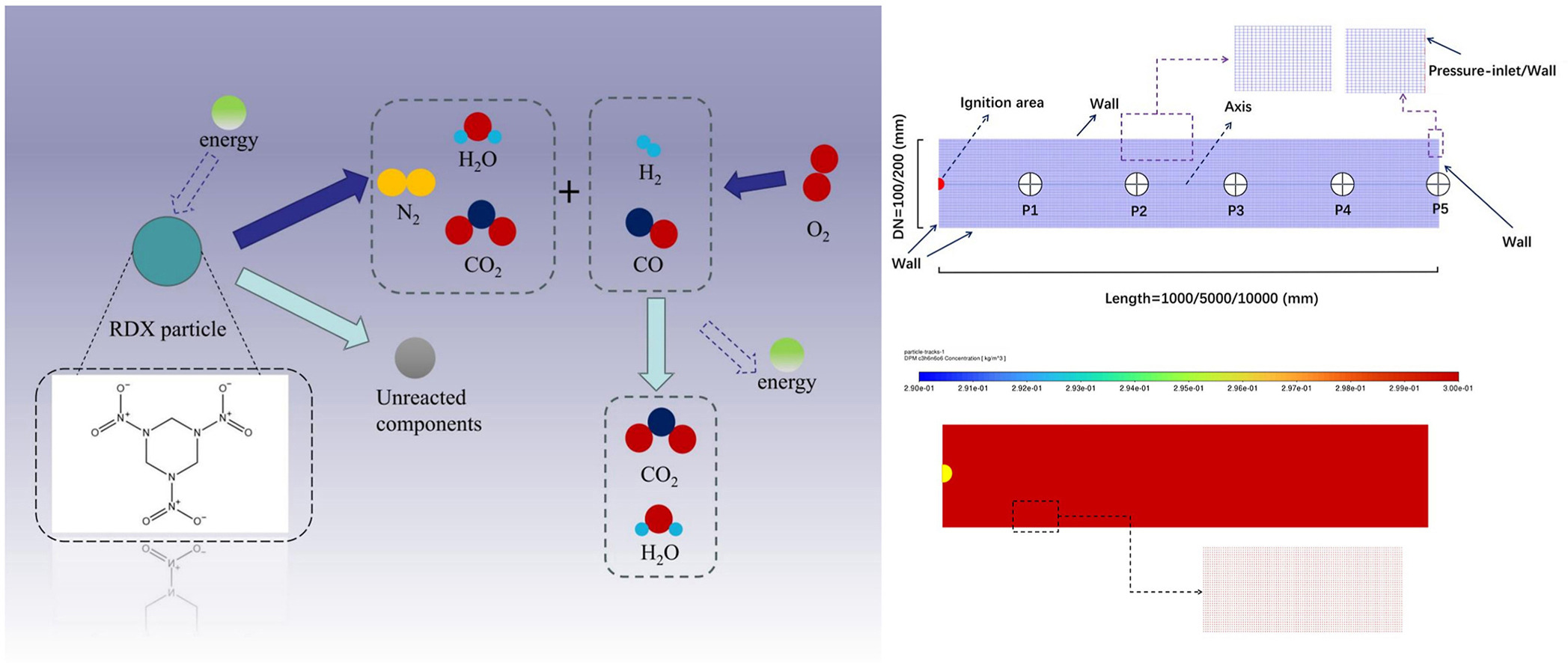• Mechanisms of RDX dust explosion have been identified.
• Explosion pressure of RDX dust increases with higher concentration.
• Longer pipelines minimally impact RDX deflagration-to-detonation distance.
• Decreased pipe diameter causes flame reversal, raising explosion risk.
• An efficient dust filling method is proposed with C program for combustion simulations.
Compared with industrial dust, explosions involving hexogen (RDX) dust result in more severe consequences. Studying the explosion characteristics of RDX dust cloud in confined spaces is essential for improving industrial safety and military disaster prevention. In this study, a two-dimensional pipeline model was established using numerical simulation methods to investigate the effects of RDX concentration, ignition energy, pipeline length, and length-to-diameter ratio on the characteristics of RDX dust explosions. The results show that the essence of RDX dust explosions is a violent gas-phase chain exothermic reaction, with high-energy decomposition at its core. The explosion intensity increases non-linearly as ignition energy increases. For RDX concentrations of 100, 200, 300, and 400 g/m3, the time required to form a stable detonation decreases as the RDX dust concentration increases. When the ignition energy is in the range of 57.23 mJ to 10.1 J, changes in ignition energy have no significant impact on the energy released by the RDX explosion if the ignition energy is small. However, at high ignition energy, the explosive hazard of RDX increases significantly. As pipeline length increases, the stable detonation pressure and propagation velocity of the detonation wave essentially unchanged, but the rebound pressure on the pipeline wall gradually increases. In cases of high length-to-diameter ratios, a flame front reversal phenomenon occurs during the combustion process of RDX dust. In addition, a new dust rapid-filling method was developed using the C language, which enables rapid and uniform dust filling in combustion simulations.

